The Top Ten Monsters from Dungeons & Dragons
When Tactical Studies Rules (TSR) introduced Dungeons & Dragons to the public in 1974, they brought two things to the table. First, they crafted a series of rules for combat that took advantage of the 20-sided dice that the game became known for. Second, they encouraged both adults and children to use their imaginations to delve into their fantasy setting. Back then, the public viewed fantasy as a childish genre with little to offer. Even the works of Tolkien did not break this mindset. However, the game challenged that mindset and challenged adults to embrace a fantasy setting.
Aiming to gain popularity with adult players of wargames, Dungeons & Dragons set out to remove fantasy from the fairytale backdrop. While their world still had typical mainstays of the genre, like elves and dwarves, they introduced a broad range of monsters. Aside from the namesake dragons, TSR also introduced a large range of beasts and demons that adventurers would encounter. While some of these creatures reinvented the pre-existing molds, others introduced players to a new range of creatures, like the Beholder.
As the game gained a foothold in popular culture, fundamental Christians who rarely looked at fantasy began to take notice as well. Without fully understanding the imagination at play, they cried out in panic about satanic practices. Wanting to continue the upward trend of popularity, TSR attempted to appease these voices by toning down the occult elements of the game. Thus, some monsters lost the original edge from the original publications.
Still, today’s cast of monsters calls out to players, both new and old. Some have even become so iconic that entire television shows center around their concepts. So, join us as we delve into the top ten monsters from Dungeons & Dragons.
Presenting the top ten monsters from Dungeons & Dragons
10. Gelatinous Cube

While crawling through the dungeons of the game, adventurers faced many dangers. However, some of these creatures deceptively lowered their defenses. For instance, it is hard to imagine a giant gelatinous cube as a threat. Slowly moving, these creatures could become a deadly threat to any who do not take them seriously.
Beyond having immense strength, the Gelatinous Cube can become one of the deadliest parts of a dungeon. Once one of these beasts touches its victim, their fate is all but certain. For, the cube secretes a thick paralyzing slime that quickly works its way into the bloodstream. As the victim falls victim to the paralytic, the cube engulfs them, its digestive acids break down the body so that the adventurer becomes dinner.
While the Gelatinous Cube has a reputation for dissolving adventurers into meals, they are not obligate carnivores. Instead, these creatures scavenge and eat any organic substances they encounter. However, they are incapable of digesting inorganic matter or bones. Due to their scavenging natures, other creatures bring these cubes into their dungeons as a means of keeping them clean.
There is little doubt that the 1950s classic monster flick, The Blob, inspired the creation of the Gelatinous Cube. However, this creature has gained a name for itself. It has even appeared in movies, like Disney’s Onward.
9. Umber Hulk
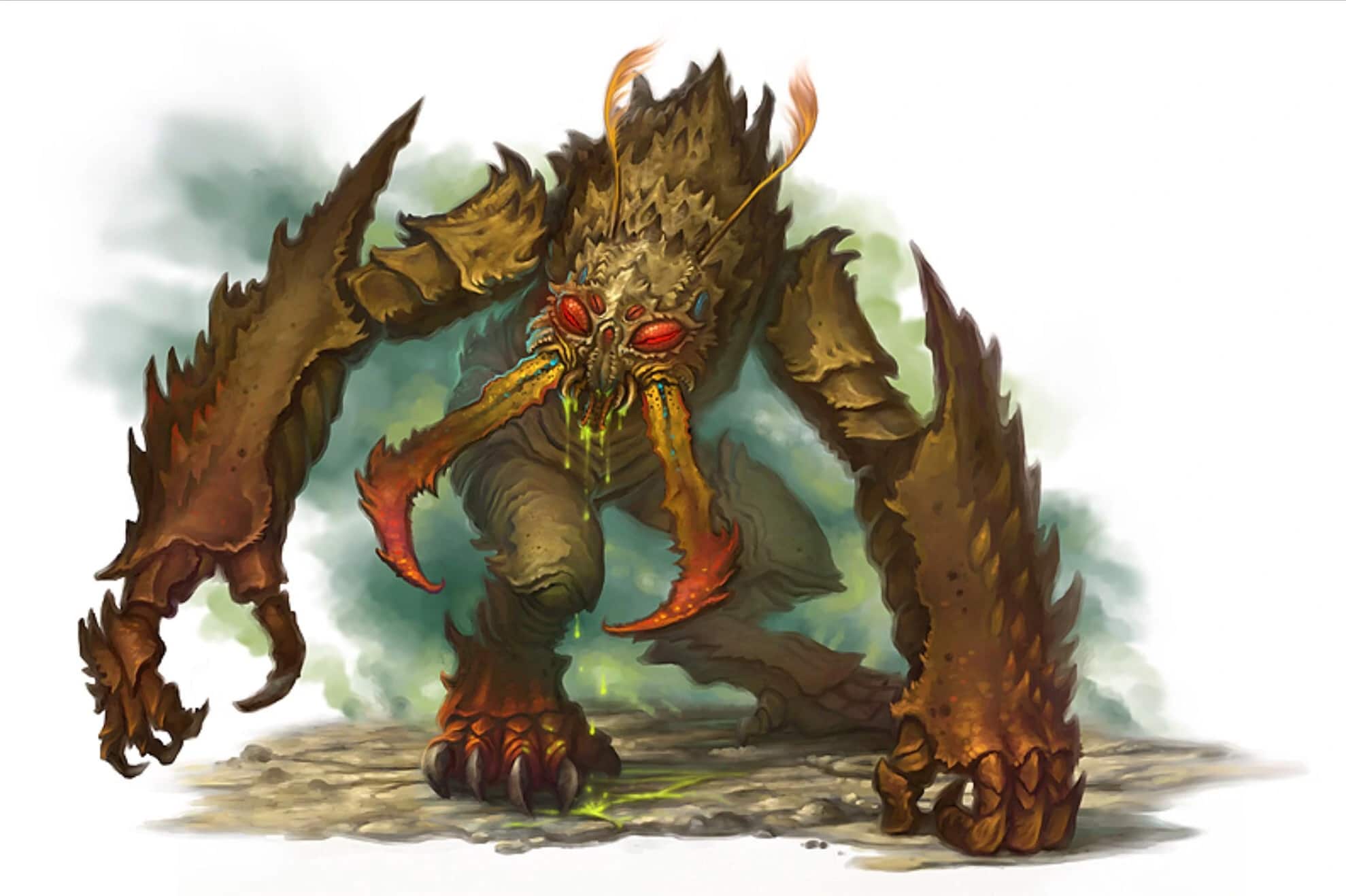
Rarely venturing above ground, one of the oldest societies of creatures dwelled underground, the Umber Hulks. These massive creatures appeared to be the nightmare child between a gorilla and a beetle. With its gigantic set of mandibles and thick arms, adventurers easily felt threatened by these creatures. Worse, these creatures showed little indications of intelligent thought, having gained a reputation as unthinking brutes.
Despite their reputation, Umber Hulks could rationally think and plan out their attacks. However, they mostly relied on their sheer strength to take out their prey. When they could not overpower someone, they would instead use their abilities to reshape the earth. Luckily, Umber Hulks preferred solitude, so adventurers rarely see them in groups.
Umber Hulks rarely attacked without a reason for their hunt, for they preferred to kill only what they needed. Even as they targeted weak prey sources, they would only kill enough to satisfy their hunger. Thus, their prey would have time to repopulate before they attacked again. Likewise, they would avoid attacking groups that could potentially pose a threat to them. If by chance an Umber Hulk felt threatened, they would retreat and create cave-ins to confuse their enemy.
8. Dragonne
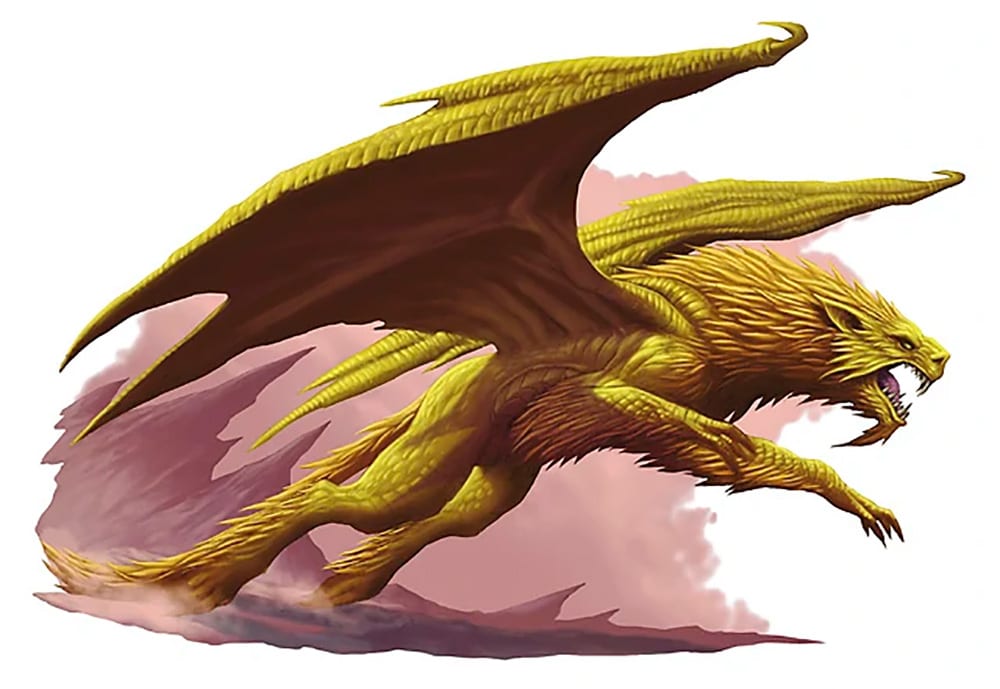
While traveling around the hills of Halruaa, the Furrowed Mountains, and other mountainous areas, some travelers would gleam a rare sight, the dragonne. Unlike the traditional sphynx, the dragonne combined the appearance of a brass dragon with a mighty lion. Generally, these creatures grew so that they measured twelve feet long and five feet tall at the shoulders. However, some of the oldest members of their species reached lengths of eighteen feet. With their size and muscled build, they easily weighed up to seven hundred pounds.
According to some legends, magicians who wanted unique mounts used their magic to create the dragonne species. Ideally, these creatures would become valuable guardians thanks to their combined traits. Further testifying to their origins as a magical crossbreed, some races like moon elves keep dragonnes around as companions. On the other hand, barbarians prefer to hunt down dragonnes then sell their pelts.
In general, dragonnes prefer to attack cattle and rarely strike out at humanoids. Still, many people spread tales about dragonnes preying on humanoids. Most likely, the violence from their mating seasons, where they would attack anything other than their mates, generated these tales. Still, their most fearsome asset was their roar, which weakened the minds and bodies of those who heard it.
7. Bulette
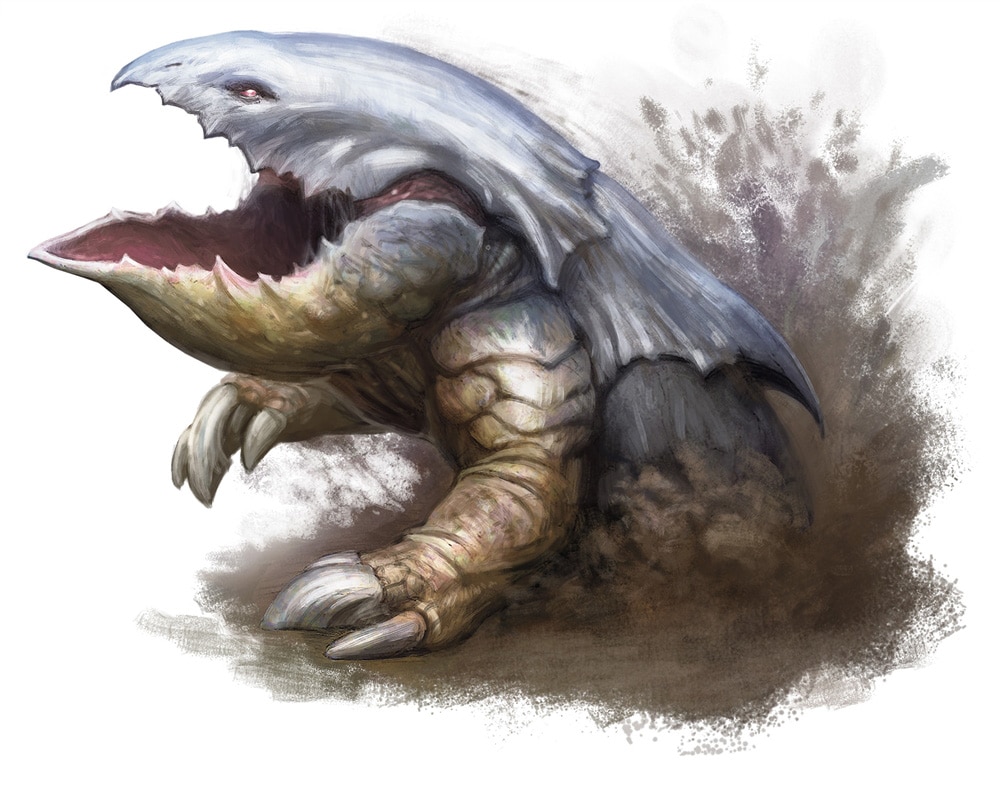
Often, the most dangerous creatures in Dungeons & Dragons lay beneath the feet of adventurers. Waiting in soft soil, the Bulette ambushes its prey from beneath their feet. They then prefer to swallow their meal whole, allowing their digestive acids to break down even weapons and clothing. To accomplish this feat, the Bulette uses the vibrations that travel through the soil to track their victims. Even though they mostly use these vibrations, their eyes are also sensitive enough to see in perfect darkness.
Thanks to the distinctive fin on the back of these creatures, they have gained the moniker “land-shark”. Moreover, they have a bullet-shaped head along with a mouth filled with rows of teeth. Making them even more of a threat, thick, usually blue-brown, armor covers their bodies.
Luckily, Bulettes only live in a few parts of the world. For the most part, they have been located around the forests of Cormanthor. However, they have also been located along the Sword Coast and Lizard Marsh.
6. Kobold

While traveling through thick forests or underground, adventurers should be warry of encountering the Kobolds. Usually standing no taller than two and a half feet, these reptilian humanoids grew bitter of others races that scorned them for their stature. Even when showing some respect for larger species, they would secretly resent them.
As distant relatives of dragons, the Kobolds shared many features with the great serpents of the land. Scales covered their bodies, giving them a natural armor. Meanwhile, they often had the same spikes and horns that dragons would have on their heads. Unfortunately, they did not maintain the wings of dragons, even though some would craft fake wings to wear. Further differentiating themselves from dragons, Kobolds are a cold-blooded race that cannot tolerate the cold.
When Kobolds engaged in battle, they preferred to use their cunning wit to take down their foes. So, they would lay multiple traps and wait for an ambush. Once their enemies became weak, they would then call upon their numbers to overwhelm their foes. Likewise, if they found themselves with no backup, they would opt to flee for safety.
Unlike other dangers that adventurers could face, Kobolds lived in a sophisticated society filled with many crafters and miners. They enjoyed wearing clothing that would complement their eyes, especially orange and red cloths. Some even gained some mastery over magic, especially spells that helped them locate ores.
5. Slaad
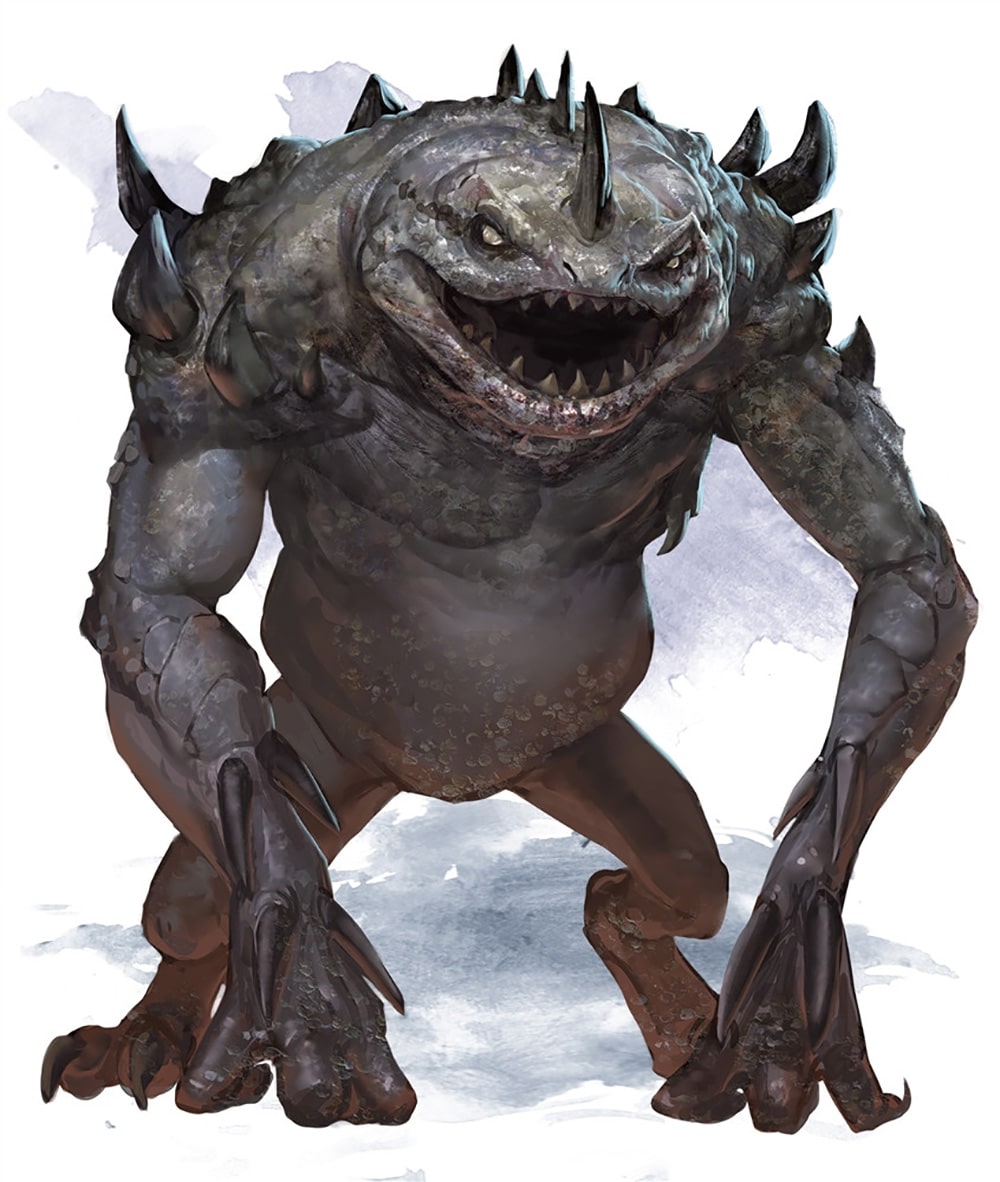
As residents of the chaotic Limbo, the Slaad became the representatives of the ever-changing outer realm. These toad-like creatures followed none of the standard rules of known society. Instead, their erratic mannerisms and disregard toward standard diplomacy made many believe that they were insane. When offered a diplomatic bargain, the Slaads would often attack the negotiator. Only those who paid close attention to a Slaad’s gestures had a hope of following the swirling mass of chaotic thoughts in their heads.
Still, these creatures formed a cultural hierarchy, where the strong rightfully took what they wanted. While these creatures had no concept of possessions, they still believed that the strong should rule the weak. Thus, they believed any stronger members who dominated weaker members had the right to do such. Thus, cruelty and bullying defined the Slaad society.
While a typical Slaad relies on its brute strength, some of these creatures can call upon magic as well. Their chaotic home has allowed several of these creatures to form mutations, with several variant Slaads wandering the lands. Moreover, these creatures possess such powerful healing abilities that they easily recover from near-fatal wounds. Their durability also spans to helping them deal with acids and elemental forces.
4. Mindflayer
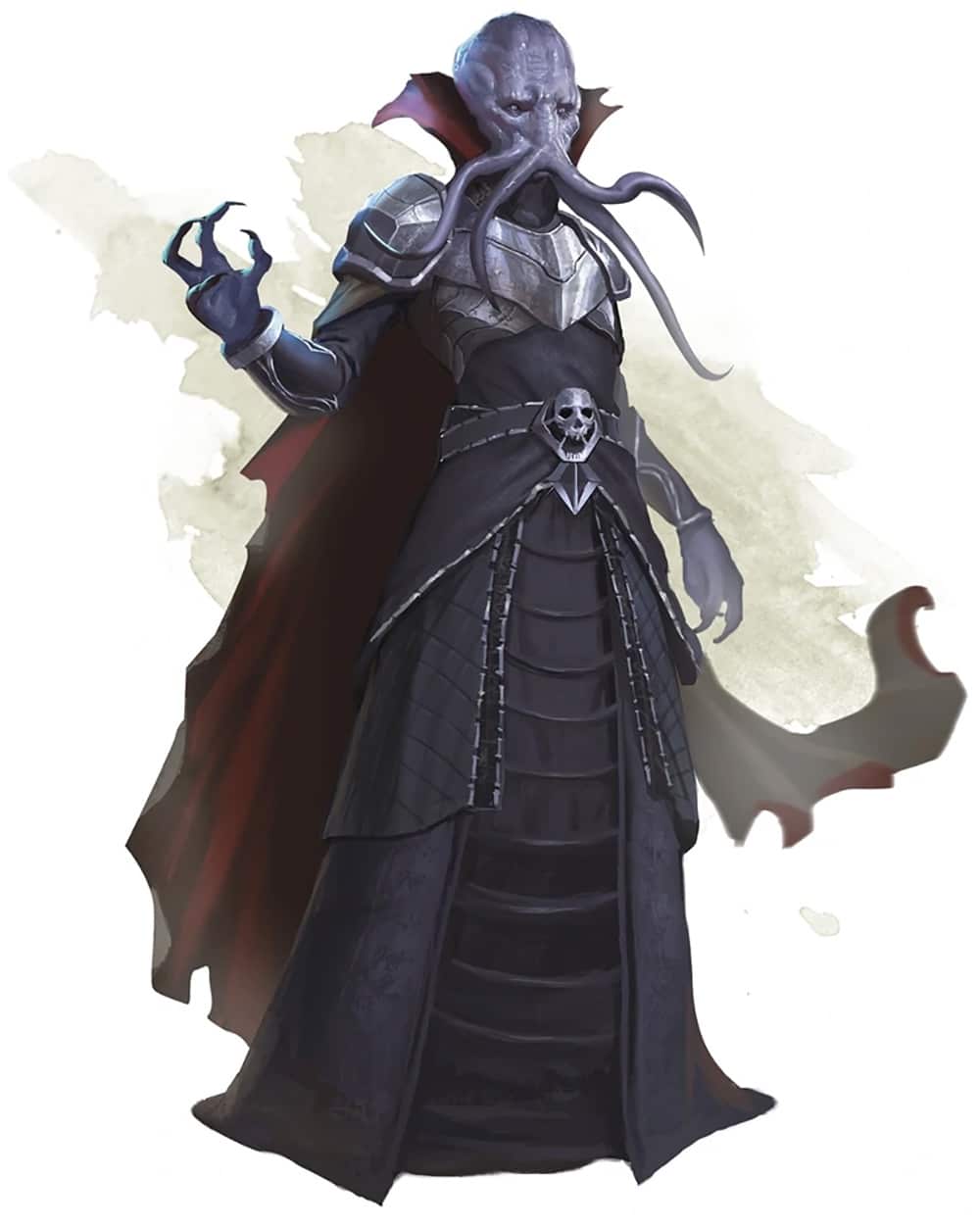
Players would be forgiven for thinking of Lovecraft’s iconic beast, Cthulhu, when facing against the might of an illithid, otherwise known as a mindflayer. While Gygax claimed that he developed the creature on his own, he admitted finding influence from the cover of The Burrowers Beneath. Moreover, their tentacled faces closely resemble the appearance of Cthulhu and his elk. Further indicating this creature’s origins, it uses its psionic abilities to enslave all other races, as it sees them as inferior.
From far away, a mindflayer resembled any other humanoid being. However, closer inspection would show several obvious differences between these otherworldly creatures and other humanoid races. First, they had elongated heads with four tentacles around the mouth area. Then, their soft, rubbery skin could be either mauve or purplish in tone. Their slender four-fingered hands ended in thick black nails. Seeming to have a flair for the dramatic, these creatures often wore flowing robes or cloaks. They also wore boots that hid their webbed feet.
In general, the ilithids looked down upon other creatures, seeing them as pawns that they could control. Thus, they gained their name as Mind Flayers who enslaved other races. Many share the same goal, to gain complete dominion over the realm as they followed their rightful destinies.
The impact of the Mindflayer has reached beyond the game, for this creature strongly inspired the antagonist of Netflix’s Stranger Things. Elsewhere, the Brainsuckers from Bloodborne also closely resemble the Mindflayer.
3. Behir
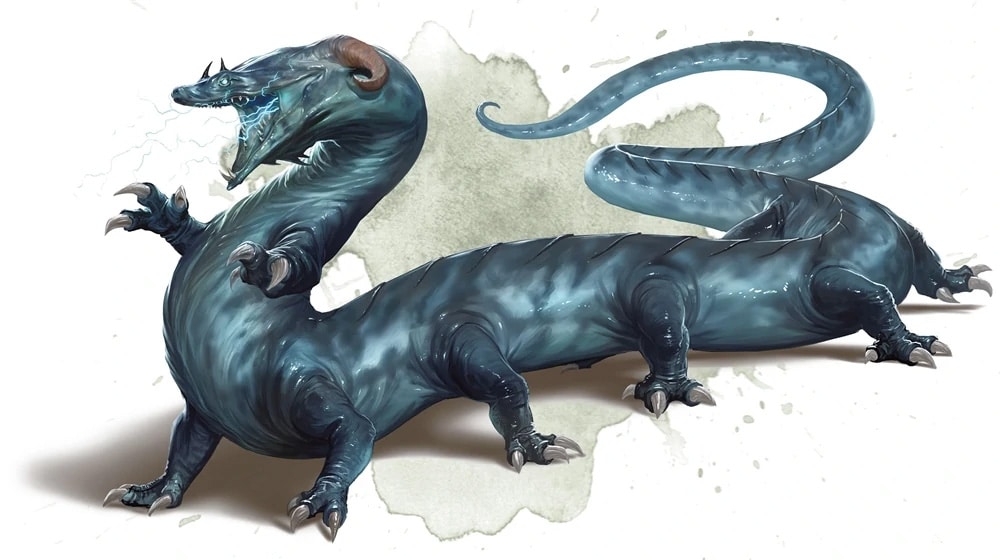
As TSR came up with monsters for their tabletop RPG, they dipped into several mythologies for inspiration. While some believed that the Behir was a fully original creation, its very name testifies to the creature’s inspiration. In Scottish folklore, a snakelike creature, the beithir, terrorized the land with lightning breath. Likewise, the Behir is a serpentine creature that fires lightning from its mouth.
While travelers might initially mistake a Behir for a dragon, the two species are vastly different. First, the Behir has no wings. Instead, it has six sets of legs that it crawls along the ground with. Their limbs also allowed them to swiftly climb, especially up the cliffs where they built their nests. Next, these creatures cannot stand sharing territory with dragons. So, they would either drive the dragon out of their territory or slip away to find a new home.
Like dragons, these creatures have an armored, scaly hide. They also often have curved horns on the back of their crocodilian heads. These creatures typically grow to become forty feet long and weigh around 4,000 pounds.
For the most part, Behirs live solitary lives. However, adventurers can find them in mated pairs during early spring. After their clutches hatch, these creatures drive off their young before returning to their solitary lifestyle.
2. Beholder
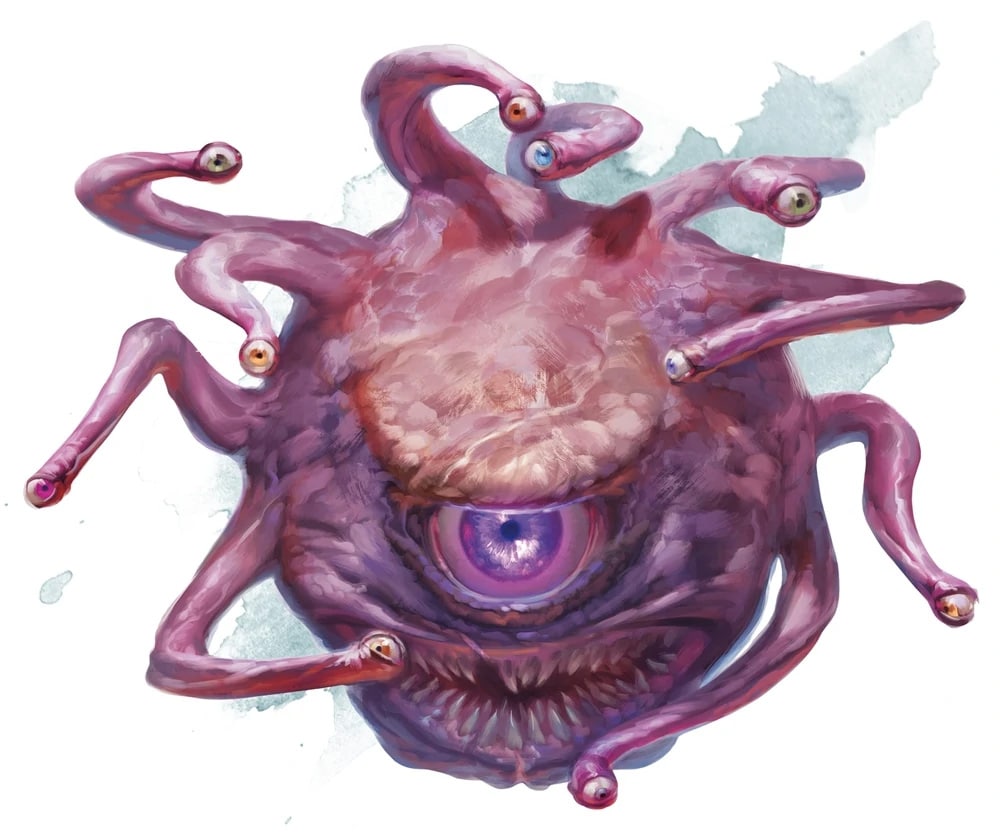
Any adventurer that braves the deep, underground caverns around the land should accept the risk that they will encounter a Beholder. These strange creatures are basically a floating head surrounded by multiple tentacles. While their main body only has one eye, the various tentacles each have their own eye, allowing them to see all around their bodies. Then, they have a large maw filled with long fangs. Their innate magic allows these creatures to levitate through the ground, making up for their lack of arms or legs.
Beholders prefer not to be disturbed, especially by foreign creatures. Thus, they quickly become violent toward creatures that are not like them. While this hints at their xenophobia, they also have a keen sense of self-importance, believing that they are the perfect beings.
While these creatures are not necessarily strong, they possess powerful innate magical skills. For instance, each of their eyes could project magical beams. They also can protect themselves with antimagic fields.
Unlike many other creatures that TSR created, the Beholder is one of their most unique creations. With no direct inspiration, this creature is a true Dungeons & Dragons product. Likewise, other companies have taken note of the Beholder and created similar creatures. For instance, Capcom’s Dragon’s Dogma featured the Evil Eye. With its tentacles and a single eye, this creature shares many similarities with the Beholder.
1. Tiamat
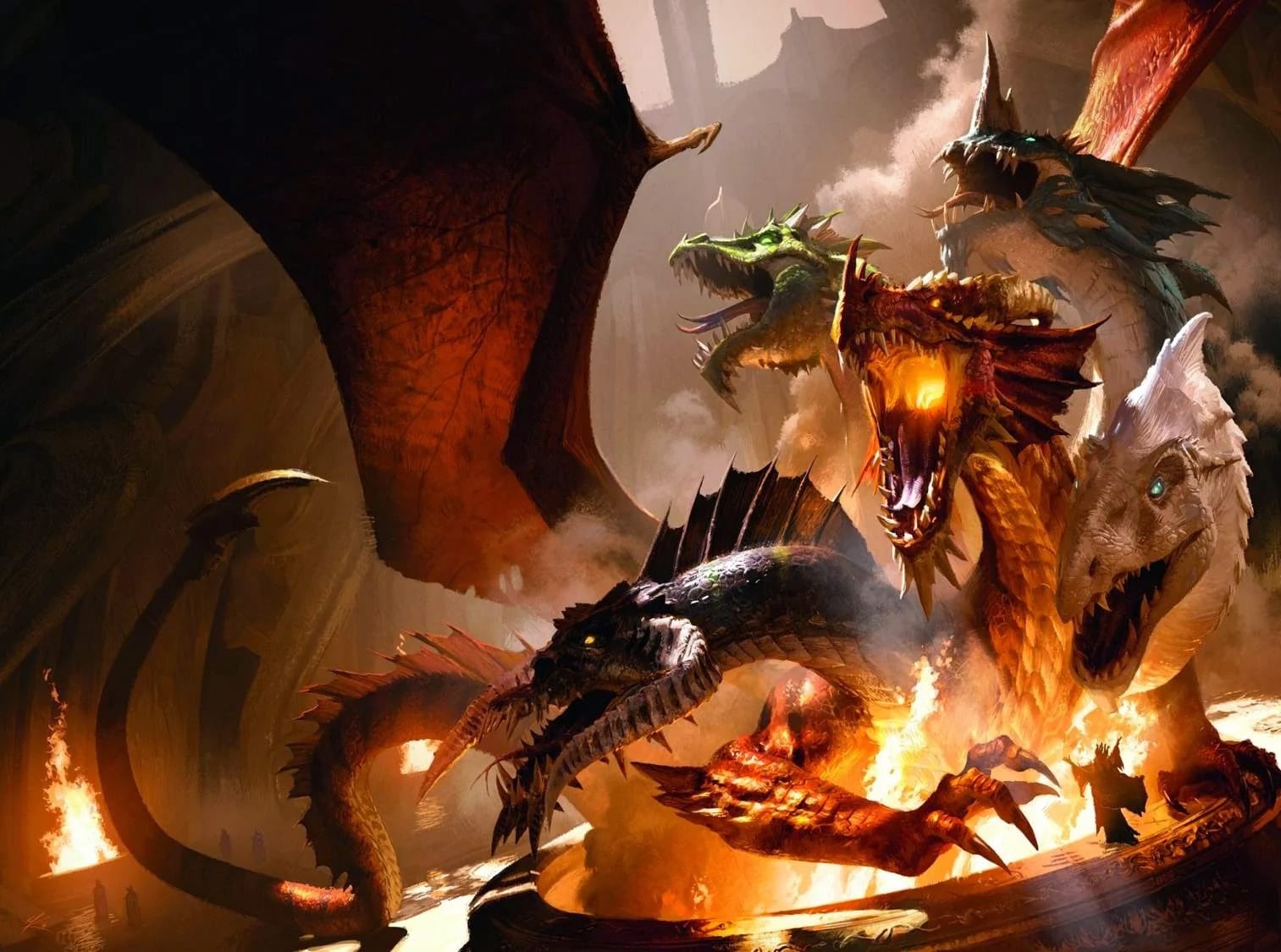
Unlike the Mesopotamian Goddess of the Sea, Tiamat is a creature of multiple elements, especially the flame. As one of the mightiest dragons in the realm, she feels that she ranks amongst the deities. Furthermore, like her namesake, Tiamat is the mother of monsters, or rather dragons. Each of the evil chromatic species could trace its origins back to Tiamat.
This gigantic dragon has the powers of each of the chromatic dragons thanks to her five heads. Her black head gives her the power to spit a stream of acid at her foes. Then, her blue head fires streams at lightning. Furthering her dangerous powers, her green head could spew poisonous chlorine gas. Meanwhile, her white head gives her dominion over ice, freezing enemies in their tracks. Finally, her red head allows her to produce a blazing inferno.
With so much power, Tiamat feels that she is the only creature alive that deserves to challenge the gods. With the support of her followers, she has taken down several Utheric deities. So, she believes that her dream of becoming the goddess of the realm is within reach.
Still, sages have questioned whether Tiamat is a proper deity. While they understand that even her children, the dragons, worship her as their creator, they believe that she is a mortal dragon. Still, there have been times when scholars have listed Tiamat as one of the world’s deities.
What are your favorite creatures and monsters from Dungeons & Dragons?
Today, we have shared ten of the greatest and most intriguing creatures from Dungeons & Dragons. However, dozens of creatures fill the pages of the rulebooks. So, which of these creatures are the ones that you like the best? Let us know in the comments below.
Do you have old and used Dungeons & Dragons toys?
If you have a collection of old and used toys, you can turn those toys into cash. There is no reason to let those old toys collect dust. Contact us today to sell your Dungeons & Dragons toy collection.
About the Author
Chris Ingledue is the founder and owner of Wheeljack’s Lab pop Culture and Toy Shop. His vision has always been to reunite customers with their favorite childhood toys and pop culture, triggering fond memories, and reigniting their imaginations. Every day he works in the “lab” where it’s Christmas 365 days a year; scouring the internet – like we did the Sears Catalog of yesteryear – for the next great treasure, awaiting the arrival of the postman as if he was Santa Claus himself and helping collectors worldwide with their own versions of Christmas. For Chris, every day as a vintage toy buyer is an absolute joy!